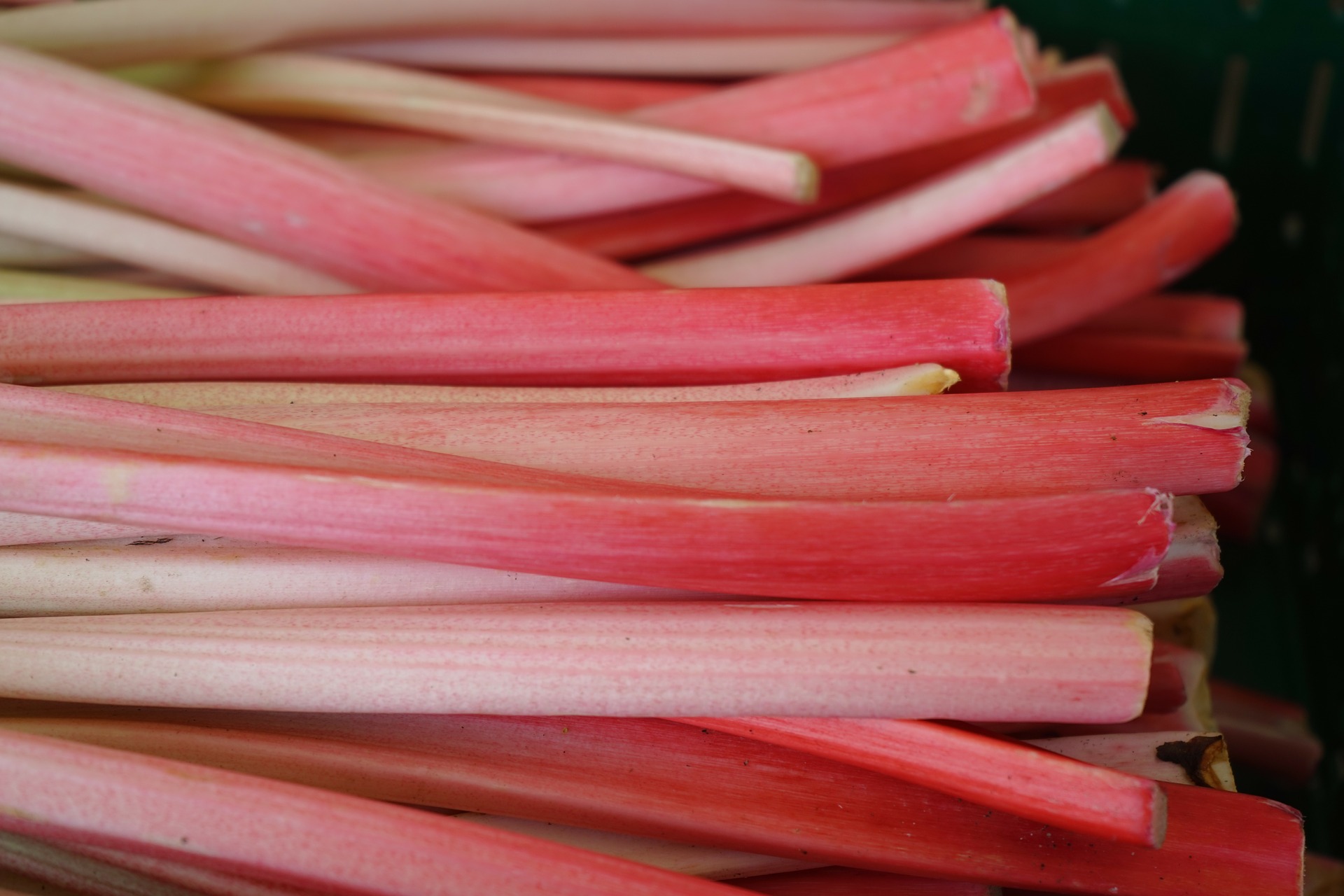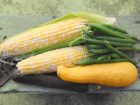By Rupert Titchmarsh
January and February can be the most depressing time of the year (notwithstanding the onset of the 6 Nations hurray!), with drab, grey days cut short by early sunsets, post Christmas blues and red bills landing on the doorstep. I find the best way to counter this is to begin the countdown to summer by recognising the signs that nature provides as a guide to better times ahead. First come the snowdrops, crocuses (croci?) then the daffodils emerge from their torpor. As a foodie it can just as easily be charted by the arrival of seasonal produce in the shops.
Walking past my local green grocers the other day, the default grey-green and beige palette of root vegetables and brassicae arrayed outside was counter pointed by the crates of the beautiful coral pink stems of the first of the forced rhubarb. Known as Champagne Rhubarb it is reminiscent of sticks of seaside rock. This sight immediately transports me back to childhood and the memories of midafternoon snacks consisting of a raw stick of rhubarb dipped into sugar (vanilla sugar would be nice), this most delicious of vegetables following hot on the heels of the purple sprouting broccoli is the surest indication that spring is about to be sprung
Writing from Harrogate in North Yorkshire puts me just on the periphery of the ‘Rhubarb Triangle’ consisting of Wakefield, Leeds and Morley. In this area huge quantities are ‘forced’ ready to be sold from January onwards. Rhubarb is a plant that left to its own devices will not be ready for harvesting until summer forcing not only makes it available much earlier but also changes the nature of the finished product quite dramatically. Left in the garden, rhubarb is the ultimate in low maintenance vegetables, fertilised by the previous years decaying foliage (the leaves contain oxalic acid and are toxic to humans), it will start to sprout in April/May and can be harvested from July onwards. The stems of outdoor grown plants are more green than red and are tougher in texture and sourer in flavour. Still very tasty they will need peeling before cooking and require lots of sugar if poaching for a dessert.
Forcing rhubarb is the process of denying it light and raising the temperature, similar techniques are used in the production of White Asparagus and Chicory (Endives). These artificial conditions can be created on a commercial scale, as in the rhubarb triangle or replicated in a garden by inverting a bucket over an outdoor grown plant. Forcing rhubarb produces more slender stems with a glorious pink colour as the green chlorophyll in the plant cannot develop without light. The flesh is much sweeter and the flavour more subtle. Commercial forcing operations are fascinating, and some of the producers in the triangle offer tours around the forcing sheds….. No, hear me out here, I am not some sad rhubarb fetishist, it really is well worth the admission fee! The plants are transferred to the long, low, light deprived hot houses to be forced. The atmosphere inside is quite eerie as one can hearthe plants growing! The groans and cracks that denote the emergence of new buds are must be heard to be believed and I can’t help that think that this is a phenomenon that John Wyndham must have been familiar with. The lack of sunlight encourages the delicate pink stems to push through and these are still, as in Victorian times, harvested using candlelight to keep the younger shoots as free from U.V light as is possible. In this age of large, homogenised, commercial farming it is gratifying to see traditional techniques still being used and not as some misplaced refusal to bow to progress but because they are still the best ways of production.
Rhubarb other than being merely delicious is now classified as a super food due to its low calorific value; it has high levels of Calcium meaning other more cholesterol heavy means of calcium delivery such as dairy products can be avoided. The irony that it is such a good partner to dairy products is not lost on me however. Stewed, it marries beautifully with yoghurt, ice-cream and cream. Stewing rhubarb, providing one can resist the urge to use too much liquid, is very easy. Poaching it in orange juice rather than with water can mean less sugar is needed. A low heat will also mean it retains its structural integrity, although if cooked to a mush the flavour will be unaffected and it can be made into a fool. Vanilla and ginger also make happy bed fellows. In recent times it has enjoyed resurgence in use as a savoury ingredient and many chefs espouse its use with fatty meats and oily fish. Pork and rhubarb is a match made in heaven as Jamie’s recipe for pork belly and rhubarb suggests, it also works nicely with rabbit, duck, mackerel and tuna. So give it a go, experiment with pies, crumbles, preserves, chutneys and enjoy it whilst it is in season. If you are not much of a cook try it dipped in sugar, it is much healthier than Haribo!
Rupart Titchmarsh is a writer living in North Yorkshire, England.
Check for winter and early spring vegetables on Pick-A-Pepper.com!
Similar Stories:
- All About Growing Rhubarb
- How To Grow Stevia and Make Your Own Extract
- Health and Environmental Hazards of GMOs: An Annotated Bibliography.
- 2 Ways To Use Poisonous Rhubarb Leaves
- 20 Perennial Crops to Plant Now and Enjoy For A Lifetime.




